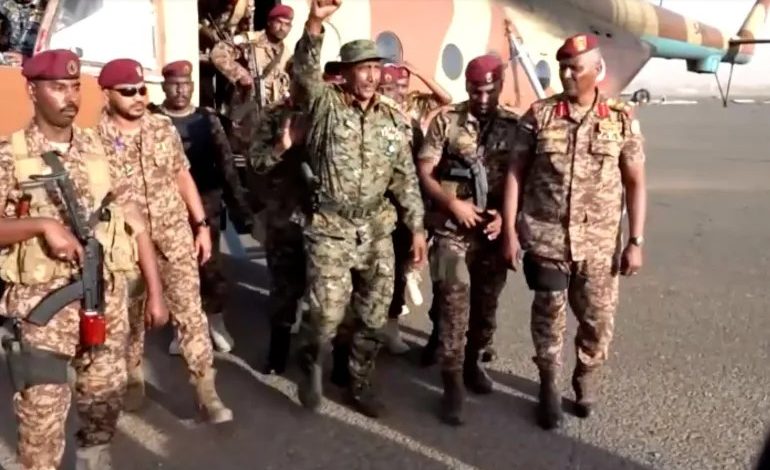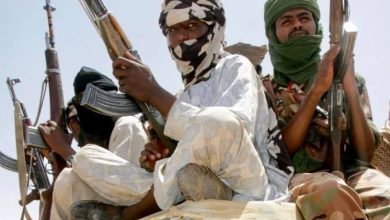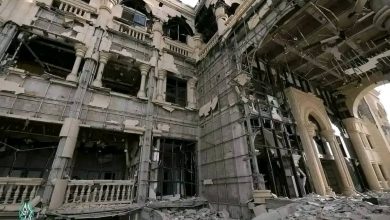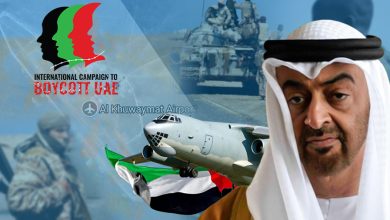Secrets of the Ten-Hour Battle in Khartoum and Al-Burhan’s Risky Landing

Report – Abdel-Baqi Al-Zafir
It was unusual for a helicopter carrying the head of state to fly over an active battlefield. Only a very few military leaders knew that the helicopter that landed on Wednesday evening in a remote area of Khartoum International Airport was carrying the Chairman of the Sovereignty Council and Commander-in-Chief of the Sudanese Army, General Abdel Fattah Al-Burhan. He prostrated in gratitude upon landing in the war-torn city of Khartoum, which had suffered from conflict for nearly two years.
According to military sources, Al-Burhan rejected alternative options that would have required his aircraft to land away from the battlefield. Upon arrival, he immediately went to the army’s General Command and then to the Presidential Palace, where—unexpectedly—three journalists from Al Jazeera were waiting for him.
A Sudanese army pilot described the visit to Al Jazeera Net as extremely risky due to the timing, choice of aircraft, and movement through open spaces in a palace that had been targeted by drone strikes just days before. Al-Burhan stated to Al Jazeera that the battles were over and that Khartoum was now free, in a brief but emphatic statement, before celebrating victory with his troops.
According to military sources, including the commander of the Armored Corps, Major General Nasr Al-Din Abdel Fattah, Al-Burhan’s visit to the airport and the palace was originally planned for the night before Eid al-Fitr to deliver a congratulatory message to the Sudanese people from within the Presidential Palace. However, he opted to be the first to inaugurate Khartoum Airport, which the Sudanese army had fully secured just hours before his helicopter landed.
The Deception Strategy
In the final battles, the Sudanese army employed a strategy called the “deception of drowning,” as revealed by a senior army commander who actively participated in the operations and requested anonymity in his interview with Al Jazeera Net. Dr. Osama Aidrous, a specialist in strategic studies, elaborated on this little-known military tactic.
According to Aidrous, the army feigned closing off Khartoum by deploying forces from multiple directions. As the Rapid Support Forces (RSF) sensed the threat following the closure of bridges and the absence of centralized leadership, they collapsed entirely, leading to a mass retreat.
Yaqub Al-Damouki, a journalist and former advisor to the RSF commander who had parted ways with the group before the war began, told Al Jazeera Net that the army used a clever trick. It allowed RSF fighters to flee on foot without their weapons or looted goods, reinforcing the narrative of a crushing defeat rather than a strategic withdrawal, as claimed by RSF advisors.
Meanwhile, RSF advisor Pasha Tabeq tweeted that “our forces were not and will never be defeated, and what happened was merely a redeployment to Omdurman for military reasons.” However, RSF commander Major General Hussein Al-Soul was more realistic, acknowledging in a tweet that his forces had lost some battles and describing the war as an ongoing struggle of advances and retreats.
The Grand Invasion Plan
More than a year ago, in late May of the previous year, the Sudanese army conducted a live rehearsal of its plan to invade Khartoum. Special forces crossed from Omdurman using military boats to reach RSF positions at the Halfaya Bridge on the Nile, north of Khartoum Bahri.
After neutralizing bridge guards, infantry and armored vehicles crossed and penetrated deep into the historic Halfaya neighborhood before making a sudden and disappointing withdrawal. This exercise was intended to assess enemy defenses and practice for what became the “Great Invasion.” On September 26, the army crossed three key bridges simultaneously with minimal casualties.
According to Major General Moatasem Al-Hassan, a lecturer at the Higher Academy of Security, the goal was not only to cut enemy supply lines but also to establish the army’s own robust supply network, ensuring resilience against potential counterattacks.
What Delayed the Army’s Victory?
Many questioned why the army took nearly two years to resolve the battle. Major General Al-Hassan noted that when the war began, the army was not fully prepared—especially in infantry—since recruitment had been halted since 2011. Additionally, weaponry shortages posed significant challenges.
A Sudanese army officer, speaking anonymously, stated that the Armored Corps suffered from a lack of munitions, and the air force was aging, adding immense pressure on current leadership to rebuild the army within a remarkably short timeframe.
Former Sudanese Navy Commander General Fath Al-Rahman explained that the army initially absorbed the shock of the attack, prioritizing soldier safety over holding ground, which could later be regained.
The RSF’s Decline
While the Sudanese army rebuilt itself, the RSF faced internal turmoil. According to Osama Aidrous, the RSF suffered from a lack of centralized leadership, wasted resources on unwinnable battles, and engaged in widespread looting and human rights abuses, further tarnishing its reputation. In contrast, the army maintained strict command and control over its operations.
The Loss of the Refinery
One of the most significant setbacks for the RSF was the loss of the Jili oil refinery north of Khartoum. According to Major General Moatasem Al-Hassan, without access to fuel, the RSF’s ability to conduct rapid, high-firepower attacks was severely diminished.
By September, after securing key bridges, the Sudanese army advanced to lift the siege on its forces defending key military installations, including the General Command, the Armored Corps, and the Signal Corps.
Siege of the Presidential Palace
After linking up with forces inside the General Command, the army focused on besieging the Presidential Palace and the central market area. A high-ranking army source explained that the palace was entirely encircled, leaving RSF fighters with no escape options.
An escape attempt from the palace was thwarted, while RSF forces in the nearby Tuti Island were allowed to withdraw via the only bridge, signaling that safe passage was an option—avoiding a battle in the civilian-populated area.
By 6 AM on Friday, army units entered the palace through the eastern gate, while exhausted RSF fighters fled through multiple exits, according to a military officer involved in the operation.
The Army’s Next Move
A military expert stated that the Sudanese army will swiftly target remaining RSF pockets in southern and western Omdurman, starting with securing Jebel Aulia. This strategy forces the RSF to retreat westward, limiting their options.
Another priority is securing the highway between Omdurman and El-Obeid in North Kordofan, which would facilitate military access to Darfur and safeguard Sudan’s western borders. While retaking Darfur remains a formidable challenge, some experts argue that the RSF, after suffering major psychological and logistical setbacks, will struggle to defend its positions.
Although analysts differ on the war’s future, they all agree that the Sudanese army’s recapture of Khartoum marks a historic military achievement in post-independence Sudan. This war was unique in every aspect—and its conclusion was just as unprecedented.



